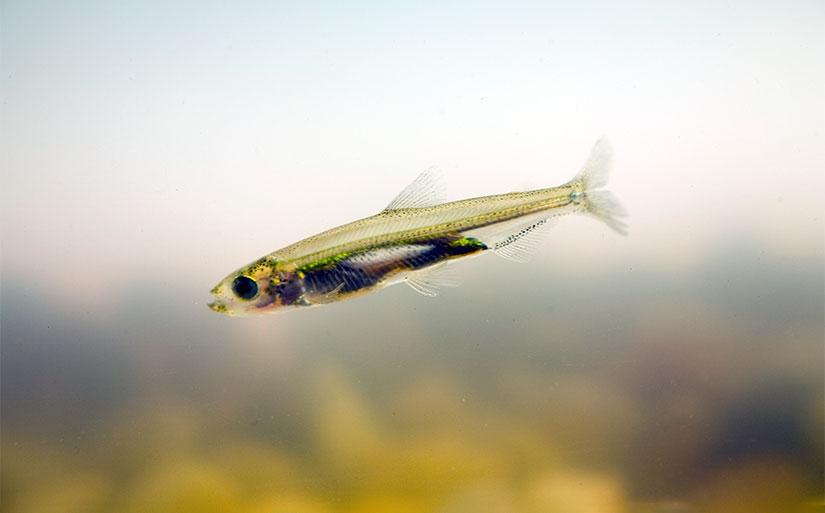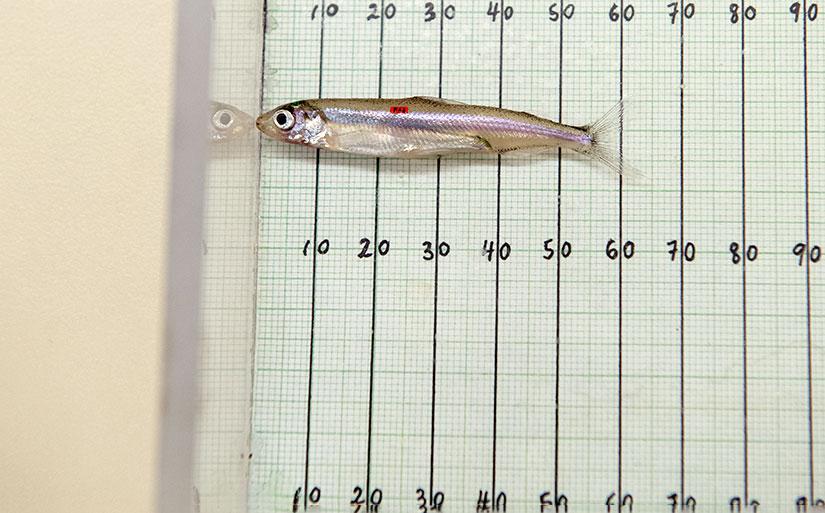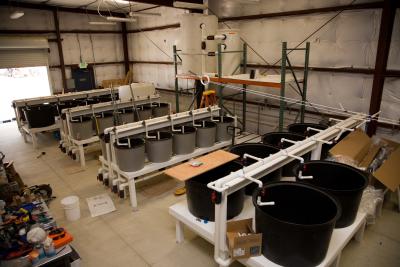Breadcrumb
Delta Smelt - important yet rare

What animal is only three inches long, found only in the Sacramento-San Joaquin Delta region, and smells like cucumbers? The Delta Smelt! This fish lives in brackish water zones, where freshwater and saltwater mix, for most of the year, but heads upstream to spawn in the spring. Although Delta Smelt can handle a wide range of salinities, they are very sensitive to anthropogenic alterations to their ecosystem. They are listed as critically endangered due to water pumping, water quality, habitat reduction, and the introduction of nonnative species that compete for food sources.
Delta Smelt are a silvery blue fish that grow to about three inches long and only live for one year. Mature fish spawn upstream in river channels in the spring, then the newly hatched larvae are transported downstream to where salt water meets fresh water where they will feed and grow before making their trek back upstream to spawn. They are not the strongest swimmers and respond to tidal currents, so they tend to stay within limited areas feeding on planktonic copepods, cladocerans, and amphipods. They even act as an indicator species for the health of the Delta ecosystem, showing the impacts of alterations to the Delta and if native species are still able to be supported by this changed ecosystem.

Delta Smelt were historically found in large numbers throughout the Sacramento-San Joaquin Delta, but have since become one of the most rare fish species in the area. This is especially apparent during drought periods, when water flow and quality are diminished. Scientific surveys have had difficulty finding Delta Smelt individuals in the wild in the past five to ten years, so efforts have turned to rearing populations in captivity with the hopes of releasing them into the wild. However, the question is: will the altered Delta ecosystem be able to support these populations, or will the Delta Smelt just become a domesticated species?

Although the Delta Smelt’s story seems to be bleak, there are areas of hope. Groups such as the Interagency Ecological Program (IEP) are working to “provide and integrate relevant and timely ecological information for management of the Bay-Delta ecosystem and the water that flows through it”. These multi-agency efforts, along with extensive research and captive breeding being conducted at labs such as the UC Davis Fish Conservation and Culture Laboratory (FCCL), are determining the conditions under which Delta Smelt could be successful in the wild once again and are working on strategies to implement this.
California Sea Grant has also had a role in Delta Smelt research, with past funded projects assessing the impacts of climate change on this species and investigating the thermal life histories of it so that Delta Smelt habitat requirements can properly be determined. State agencies and academic institutions are actively working to save this indicator species from extinction while also maintaining water supply for the State, a truly complex problem.

Learn more about ongoing research efforts with the Interagency Ecological Program (IEP) here and California Sea Grant here and explore the latest findings regarding Delta Smelt and their environment in the Delta Smelt Conditions Report, regularly updated by the Delta Stewardship Council.
- California Seafood Profiles
- Aquaculture in California
- Discover California Commercial Fisheries
- Seaweed Aquaculture
- Kelp
- Coastal Hazards & Resilience
- Marine Protected Areas
- Red Tides in California
- King Tides
- Rip current safety
- FAQ: California’s Marine Heatwaves
- FAQ: Droughts & California’s Coastal Regions
- Estuaries: Connecting Land to Ocean
- Street Trash Monitoring Protocols and Educational Curriculum
- Safely Viewing Marine Mammals
- Grunion: bridging land and sea
- Delta Smelt
- Recursos en Español